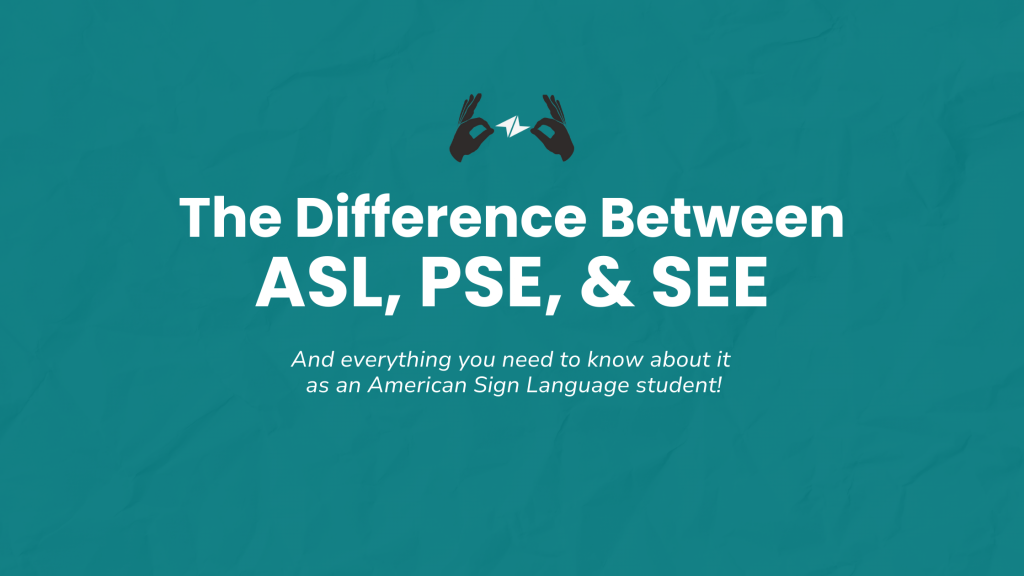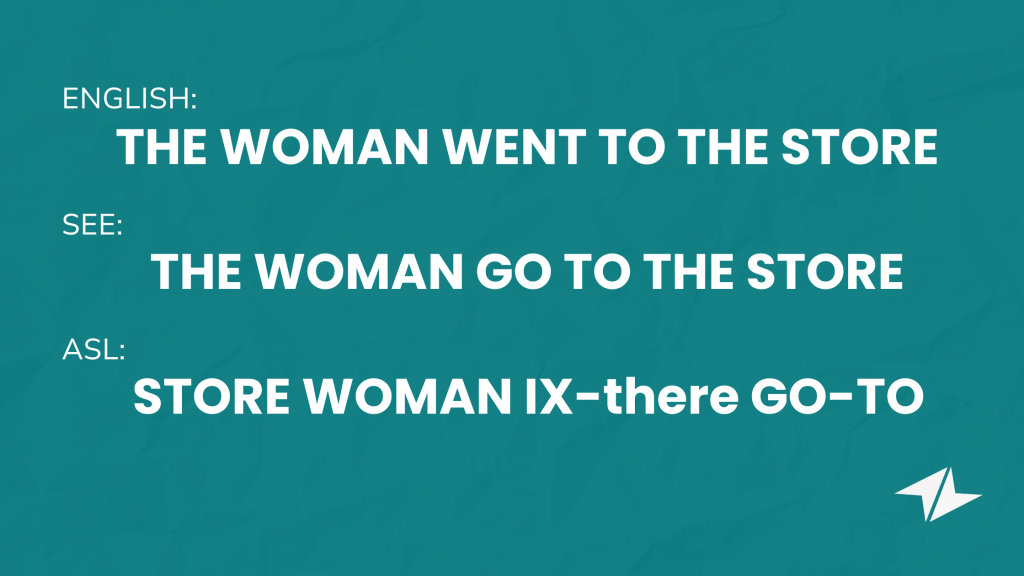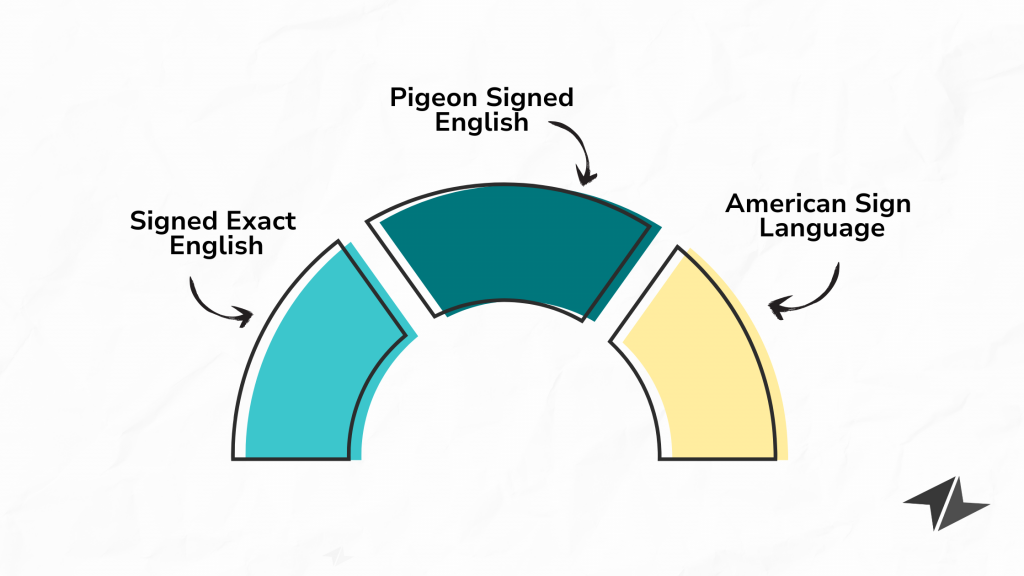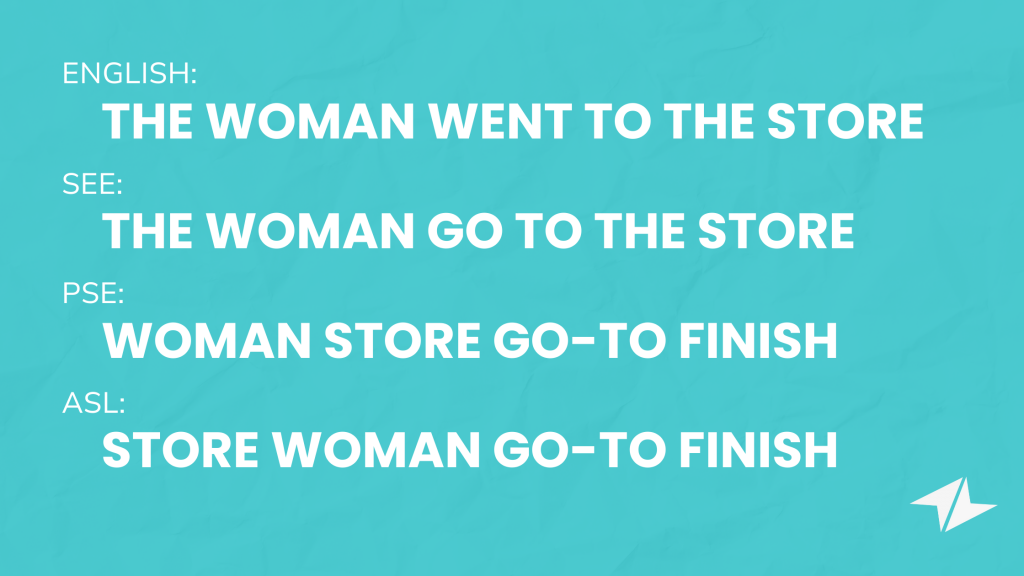When you start learning American Sign Language (ASL), you might hear people talking about SEE or PSE too. What are those? Aren’t they the same thing as ASL? The answer is no.

There are actually three different signing styles you may see in classrooms or in Deaf spaces: Signed Exact English (SEE), Pidgin Signed English (PSE), and American Sign Language (ASL). Only ASL is a full language. The others are called contact signing systems because they borrow signs from ASL but use English grammar.
If you’re an ASL student, especially in high school, understanding the difference between these systems will help you become a stronger signer and connect more deeply with the Deaf community.
What Makes a Language Different From a Contact System?
Language has its own grammatical rules, syntax, and cultural context. Contact systems use signs influenced by one language (like ASL) but follow another language’s structure (like English).

ASL is a fully developed language with its own grammar, passed down in Deaf communities. SEE and PSE borrow from ASL signs but don’t meet the requirements to be true languages.
Signed Exact English (SEE)
SEE was created in the 1970s by educators aiming to help Deaf students learn English structures visually. It includes signs for affixes, articles, and every English word. The contact system mirrors English word-for-word, including grammar markers (like -ing, -ed, is, the, etc.). It uses initialized signs or new signs to match English precisely.
It is often used in educational settings focused on improving reading and writing for Deaf students. Some parents and teachers adopt it to support English literacy.
Pros/Cons
- Pros: Supports English literacy
- Cons: Doesn’t feel natural to many native ASL users
Example Sentence
- English: I am going to the store.
- SEE: I + am + go + -ing + to + the + store

Pidgin Signed English (PSE)
PSE emerged naturally when Deaf and hearing individuals needed to communicate. It blends ASL signs with English syntax. It uses ASL vocabulary but often follows English sentence structure. It’s flexible and varies by signer.
This communication mode is often used by new signers, CODAs (Children of Deaf Adults), or in mixed-speaking environments.
Pros/Cons
- Pros: Easier for beginners
- Cons: Not standardized; may not always be clear to fluent ASL users
Example Sentence
- English: I am going to the store.
- PSE: I + going + store

American Sign Language (ASL)
ASL developed in the early 1800s, influenced by French Sign Language and Deaf schools in the U.S. It became recognized as a language by linguist William Stokoe in the 1960s. It has its own syntax, facial grammar, and spatial rules that are completely independent of English structure.
American Sign Language is the primary language of the U.S. and Canadian Deaf communities. It’s passed down in Deaf families and formal educational settings. It is more than a communication tool—it carries identity, culture, and community values.
Example Sentence
- English: I am going to the store.
- ASL: STORE I GO (with facial expression or body shift for tense/context)
(Visual idea: Create a side-by-side chart: English → SEE → PSE → ASL.)
Why This Matters for ASL Students
It’s normal to use SEE or PSE early in your ASL journey as many students start this way. But your goal should be fluency in ASL. Using ASL shows respect, clarity, and cultural awareness.
Think of these as points on a spectrum:
- SEE = Closest to English
- PSE = Middle ground
- ASL = Natural, fully developed language

Learning the difference between SEE, PSE, and ASL helps you understand not only how people communicate, but also how culture and language are deeply connected. While SEE and PSE can be useful in certain contexts, only ASL is a full, natural language that reflects the history, values, and identity of the Deaf community.
If you’re serious about building real connections and communicating clearly, ASL is where your journey should lead. Start learning ASL with Sign Language Blitz today and take your first step toward true fluency and cultural understanding.
Frequently Asked Questions
Why do some Deaf people use SEE?
Some Deaf people use Signed Exact English (SEE) because it visually represents English grammar word-for-word, which can be helpful in educational settings. Teachers sometimes use it to make English structure clearer for Deaf students who are learning to read and write. However, SEE is not a natural language and is rarely used in everyday Deaf conversations. Instead, it’s often seen as a tool for bridging English and sign language in classrooms.
Can Deaf people understand PSE?
Many Deaf people can understand Pidgin Signed English (PSE), but how well depends on their experience with both ASL and English. Because PSE mixes ASL signs with English word order, it doesn’t follow a consistent grammar system. This can make it confusing or harder to follow for some signers, especially those who are fluent in ASL. Still, it’s fairly common among hearing learners or in mixed Deaf-hearing conversations.
Should I start with SEE or PSE before learning ASL?
It’s best to start with ASL right away rather than focusing on SEE or PSE. As a full, natural language, ASL provides the strongest foundation for communication and cultural connection with the Deaf community. New learners may naturally sign in a way that looks more like SEE or PSE at first, and that’s okay—it’s part of the learning process. But the ultimate goal should always be fluency in ASL, since it’s the language Deaf people use most in daily life.



